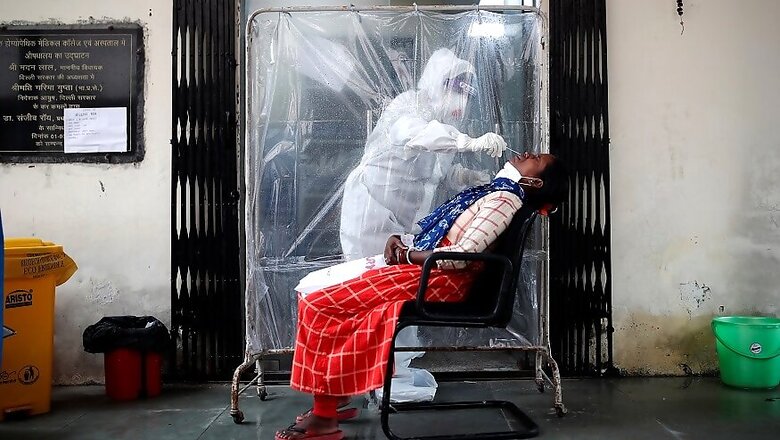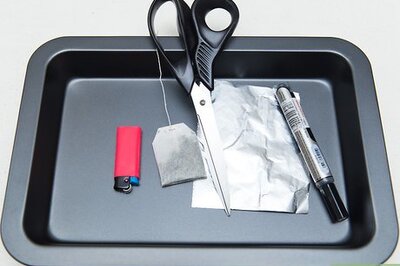
views
Delhi by now has achieved a well-controlled Covid-19 pandemic situation. Mumbai was the first state to show signs of decline and Delhi under the leadership of Arvind Kejriwal has followed the same.
Both states were expected to follow a similar pattern, being metropolitan cities catering to a large number of international flights. It was on March 25 that the Centre announced the lockdown, which was preceded by India’s first case on January 31 in Kerala. The ideal action could have been banning all international travel from January 31 and the omission led to an expected surge in both Delhi and Mumbai.
Once the lockdown was announced, the correct manner could have been a strict personal lockdown with masking, physical distancing hand hygiene and a personal commitment of not allowing anyone with in a periphery of 6 feet without masks. Instead of a mandatory regulated personal lockdown, India preferred following an international pattern lockdown, which only postponed the eventuality by a few months, leading to a day when India is in the on third position in the world in coronavirus stats. The lockdown also led to fear in the minds of people due to uncertainty, an exaggerated case fatality and a phobia of mandatory isolation.
Over a period of time, the Delhi government under Kejriwal brought about a number of changes, starting from scaling up infrastructure, increasing the number of beds, communicating facts and addressing public’s needs to know details through an app; informing about the number of vacant beds at any given time, increasing the number of emergency ambulances for both Covid-19 and non-Covid patients, constantly increasing testing facility, insisting on home quarantine and for that even questioning the LG’s decision on the matter.
Delhi was the first state to start a convalescent plasma bank, with Kejriwal requesting recovered patients to donate plasma, timely buying required number of oxygen concentrators and pulse oxymeters and making them available at homes and hospitals besides holding camps for rapid antigen tests.
The end result is that Delhi, having reached its peak of the first wave from June 16, has started showing signs of decline. Delhi has also been able to maintain a lower case fatality than Mumbai and many other states.
Over a period of time, we the doctors have learnt that in Covid-19, death is an exception and not the rule and recovery is the rule and not an exception. A patient may present immune mediated inflammation or immune mediated hyper-coagulable state. These cases demand timely management. The viral period of Covid-19 is only nine days after which it becomes non-replicable and the person becomes non-infectious to others. Based on these findings, the Delhi government rightly chose to revise the criteria of recovery to 10 days.
After nine days, the patient shifts from a Covid-19 state to post-Covid state, which can be a state of post-Covid persistent immune-mediated inflammation or immune-mediated thrombosis or clot formation. Persistent low-grade fever, loose motions rashes, chest congestion and chronic throat irritation can persist for a few weeks and needs to be treated at non-Covid facility. Patients with sudden loss of smell and taste do not become serious and requires no admission.
The move of doing the rapid antigen test in Delhi at the doorstep has also made life easy. The test is positive if confirmed positive and if negative but with symptoms needs a RTPCR test. Antibodies tests have also been allowed in Delhi and we have seen that antibodies form at day 21, they are weaker in elderly and children and in adults with mild 1-3 days duration symptoms.
Delhi has shown a sero-prevalence equal to that of New York which is around 20% and the same indicates that the mortality in Delhi is lower than 0.01%.
Delhi leadership had rightly insisted in mid-June that we are in community spread while the central government was not in agreement. That’s only the twist of definition. In fact now we are in phase four, where the number of cases does not matter, the focus should be on number of serious cases and how we could reduce mortality. This was well understood by the administrators in Delhi.
Home isolation allows possibility of cohort isolation. A positive person can stay together in a room or a flat. This allows them to avoid isolation and fearfully live with each other as in COVID picnic but of course with proper masks to prevent worsening of their viral load.
In Delhi, over 90% patients are being managed under doctor's surveillance at home and the same should be permitted under private doctors. Oxygen therapy in mild cases with exertion hypoxia should also be allowed under home isolation under cover of a GP.
One should remember that it is not the extra pulmonary Covid which is serious but the pulmonary Covid causing pneumonia on day 3-5 which is serious. If we can detect exertion induced hypoxia with six minutes’ walk test on day 3-5, we can reduce mortality substantially with timely steroids, blood thinners and anti-viral. Beds should be easily available for serious patients in hospital.
It is heartening to see state government acknowledging and honoring Covid-19 warriors and deeply appreciating their commitment at every stage. We are grateful to Kejriwal for awarding Dr Aseem Gupta’s family with Rs 1 crore as he led the Covid-19 battle from the front and lost his life.
(The author is president of the Heart Care Foundation of India and of the Confederation of Medical Associations of Asia and Oceania. Views expressed are personal.)




















Comments
0 comment